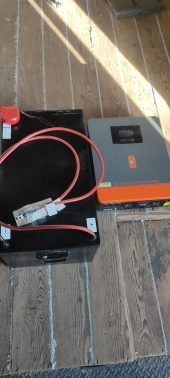




Jim Fry wrote:Look up "bush hog mower" or "rotary mower". There are many widths, wide and narrower. With a small tractor you'd probably want a 5'. They come either with three-point hitch or pto driven pull behind, with two, height adjustable, wheels. You can often find them used. ~~Then the trick is to take off the bolted on, or if necessary cut off, the (passenger side) right side, side plate. With the side off, the hay is cut and trapped under the mower just long enough to crimp the long stems of grass, and throw it out the side. The grass/hay doesn't get cut into smaller pieces. The crimping helps the hay to dry faster.
Let the hay dry a day or two, then use pitch forks to pick it up. At times I have loaded the hay into a manure spreader, or a hay wagon, for transport to barn. When you can afford it, later on, get a hay rake. Side delivery rakes tend to be numerous where horses used to be used. They work fine for small operations. And with smaller tractors. Some side delivery rakes have a lever to switch it over to ted with. That means the tines rotate backwards so that when you rake with it, it turns the hay over so it dries faster, without raking it into windrows.
Make sure your hay is dry before putting it in a more tightly sealed space, or it can mold or even self-combust. Check around any older farms for older equipment they might have that they don't use any more. Also, you might want to volunteer at any hay making farms so you can learn some about what to do.
~~~I used a bush hog for years before I finally moved up to a hay bine. I made tens of thousands of bales. And sold many of them to happy customers. The rest I fed to my cattle.

James Alun wrote:
On overrun brakes vs electric brakes. Are electric brakes just on or off? The overrun brakes will apply more braking force the harder the towing vehicle is braking.

James Alun wrote:
I'd agree that brakes are a good idea. I'm much more used to overrun brakes, for this size, are ebrakes standard on this size trailer?

